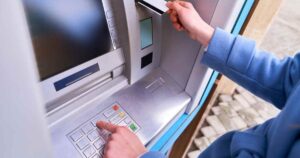In the world of entrepreneurship, starting an ATM business can be likened to embarking on a journey to unlock a vault of opportunities. However, before diving into this venture, it is crucial to understand the financial landscape that awaits. This article delves into the comprehensive costs associated with starting an ATM business, covering factors such as initial investments, machine purchases, location expenses, regulatory fees, cash management, marketing, security, and more. Prepare to navigate the complexities of this lucrative industry and uncover the true price of success.
Key Takeaways
- Thorough competition analysis is crucial for understanding market dynamics and identifying potential gaps in service.
- Location choice is significant, as it determines foot traffic and potential customer base, but it also comes with higher costs in high-traffic areas.
- When purchasing or leasing ATM equipment, it is important to consider upfront costs, ongoing costs like maintenance and repairs, and to choose a reputable supplier.
- Regulatory compliance and licensing fees vary based on location and jurisdiction, so thorough research and understanding of the regulatory landscape is necessary.
Initial Investment Costs
The initial investment costs for starting an ATM business can vary based on factors such as location, equipment, and additional services. It is important to conduct a thorough competition analysis to understand the market dynamics and determine the potential profitability of the ATM business. Location plays a crucial role in the success of an ATM business, as it determines the foot traffic and potential customer base. High-traffic areas such as shopping malls, airports, and convenience stores tend to have higher costs but also offer greater profit potential. Additionally, the cost of purchasing or leasing ATM equipment should be considered, along with any additional services like maintenance, cash replenishment, and security. By carefully analyzing these factors, one can estimate the initial investment costs and assess the profitability of an ATM business.
ATM Machine Purchases
Acquiring an ATM machine entails an initial investment, which is an important factor to consider when setting up an ATM business. The upfront cost of purchasing an ATM machine can vary depending on factors such as the type and model of the machine, as well as any additional features or upgrades. It’s important to choose a reputable supplier and compare prices to ensure you are getting the best deal. Additionally, it’s crucial to factor in ongoing costs such as ATM machine maintenance and repairs. Regular maintenance is necessary to keep the machine in optimal working condition and prevent any potential issues. It’s also important to have a plan in place for any necessary repairs to minimize downtime and ensure a smooth customer experience. Taking these factors into account will help you make a well-informed decision when purchasing an ATM machine. Moving forward, let’s now explore the expenses associated with location and site selection.
Location and Site Selection Expenses
When considering location and site selection for an ATM machine, it is important to factor in expenses such as rent, utilities, and any necessary permits or licenses. Conducting a thorough site assessment is crucial to ensure the chosen location is accessible and visible to potential customers. Additionally, a competition analysis should be performed to determine if there are existing ATMs in the area and to identify any gaps in service. This analysis will help determine the demand for ATM services and inform the decision on whether to proceed with the site selection. The emotional impact of these considerations can be significant, as the success of the ATM business relies on choosing the right location that will attract customers and generate revenue. It is essential for prospective ATM business owners to feel a sense of belonging to the community and understand the needs and preferences of potential customers.
Regulatory and Licensing Fees
Regulatory and licensing fees are an important consideration when establishing an ATM business. Ensuring regulatory compliance and meeting licensing requirements is crucial for the successful operation of an ATM business. These fees can vary depending on the location and jurisdiction in which the business operates. Regulatory compliance includes adhering to laws and regulations regarding cash handling, security, privacy, and consumer protection. Licensing requirements typically involve obtaining the necessary permits and licenses from local authorities and financial institutions. It is essential to thoroughly research and understand the regulatory and licensing landscape of the target market to accurately assess the associated costs. Once regulatory and licensing fees have been accounted for, attention can then be turned towards evaluating cash replenishment and maintenance costs, which are vital for maintaining the functionality and reliability of the ATMs.
Cash Replenishment and Maintenance Costs
Cash replenishment and maintenance costs are significant factors to consider when operating an ATM business. The frequency of cash replenishment directly impacts the expenses associated with maintaining sufficient cash levels in the machines, while maintenance service expenses cover regular upkeep and repairs. Careful analysis and planning of these costs are essential to ensure the profitability and smooth operation of an ATM business.
Replenishment Frequency and Costs
To ensure the smooth operation of an ATM business, it is essential to carefully consider the frequency and associated costs of replenishing the machines. Replenishment scheduling plays a crucial role in maintaining an adequate cash supply and avoiding cash-out situations. The frequency of replenishment depends on factors such as the location of the ATMs, transaction volume, and customer demand. It is important to strike a balance between frequent replenishments to avoid running out of cash and minimizing costs. Cash handling expenses can include transportation costs, labor costs for counting and sorting cash, and fees charged by cash-in-transit services. By optimizing replenishment frequency and minimizing cash handling expenses, ATM business owners can ensure the smooth functioning of their operations and enhance profitability.
- Frequent replenishments ensure availability of cash for customers, enhancing customer satisfaction and loyalty.
- Efficient scheduling of replenishments minimizes the risk of running out of cash, avoiding potential revenue loss.
- Careful monitoring of transaction volume and customer demand helps in determining the appropriate replenishment frequency.
- Minimizing cash handling expenses directly impacts the profitability of an ATM business, allowing for higher returns on investment.
Maintenance Service Expenses
Maintenance service expenses play a significant role in ensuring the proper functioning and longevity of ATM machines. As ATM machines are constantly used by customers, they are subject to wear and tear, which requires regular maintenance and occasional repairs. This is where maintenance service providers come into play. These providers are responsible for conducting routine maintenance checks, such as cleaning, lubricating, and inspecting the ATM machines to ensure optimal performance. Additionally, they are also responsible for addressing any issues or problems that may arise, such as equipment malfunctions or software glitches. The cost of maintenance services can vary depending on several factors, including the type and model of the ATM machine, the level of service required, and the expertise of the maintenance service provider. It is important for ATM business owners to carefully consider these factors and choose a reputable maintenance service provider to minimize equipment repair costs and maximize the lifespan of their ATM machines.
Marketing and Advertising Expenses
When considering the cost of starting an ATM business, it is important to factor in the expenses associated with marketing and advertising. Digital marketing strategies and social media advertising are crucial for reaching potential customers and promoting the services offered by the ATM business. These expenses may include:
- Creating and maintaining a professional website to showcase the business and attract customers.
- Paying for online advertising campaigns to increase visibility and reach a wider audience.
- Engaging in social media marketing to connect with customers and build brand loyalty.
- Investing in search engine optimization (SEO) to improve the business’s online presence and ranking in search results.
Implementing effective marketing and advertising strategies can significantly impact the success and growth of an ATM business. By utilizing digital platforms and engaging with customers online, the business can establish a strong presence in the market and foster a sense of belonging among its target audience.
Insurance and Security Costs
When starting an ATM business, it is crucial to consider the insurance coverage and security measures required to protect your investment. Insurance coverage is necessary to safeguard against potential risks, such as theft, vandalism, or equipment malfunctions. The cost of insurance will depend on various factors, including the location of the ATMs, the number of machines, and the extent of coverage desired. Conducting thorough research and obtaining multiple quotes from reputable insurance providers will help you find the best coverage at a competitive price.
In addition to insurance, implementing robust security measures is essential to protect both your ATMs and the cash inside. This may include installing surveillance cameras, alarm systems, and secure locks. By investing in adequate security measures, you can deter potential criminals and minimize the risk of theft or damage. It is important to stay updated with the latest security technologies and industry best practices to ensure the safety of your assets and maintain customer trust.
FAQ’s
What Are the Ongoing Operational Costs of Running an ATM Business?
The ongoing operational costs of running an ATM business include maintenance, cash replenishment, rent, insurance, and transaction processing fees. Conducting a profitability analysis will help determine if these costs align with the business’s revenue potential.
Are There Any Specific Legal Requirements for Operating an ATM Business?
Operating an ATM business requires compliance with specific legal requirements and licensing processes. These include obtaining the necessary permits, adhering to financial regulations, ensuring data security, and following anti-money laundering laws. Thorough research and adherence to these legal obligations are crucial for a successful ATM business.
How Long Does It Typically Take to Recoup the Initial Investment in an ATM Business?
The average payback period for an ATM business varies depending on factors such as location, transaction volume, and operating expenses. A profitability analysis should be conducted to determine the specific timeframe for recouping the initial investment.
Are There Any Restrictions or Regulations Regarding the Types of Locations Where ATMs Can Be Placed?
Various types of businesses, such as convenience stores, hotels, and shopping malls, are suitable for placing ATMs. Profitability of different ATM locations is influenced by factors like foot traffic and surrounding competition. Regulations regarding placement may vary by jurisdiction.
What Are the Potential Risks and Challenges Involved in Running an ATM Business?
Running an ATM business comes with potential risks and operational challenges. These can include cash management, security threats, regulatory compliance, maintenance, and competition. It requires thorough analysis, research, and a proactive approach to mitigate these risks and overcome challenges successfully.
Conclusion
In conclusion, starting an ATM business requires careful consideration of various costs such as initial investment, machine purchases, location selection, regulatory fees, cash replenishment and maintenance, marketing and advertising, as well as insurance and security expenses. For example, a case study of a successful ATM business owner shows that after investing $50,000 in purchasing and installing machines, they generated a monthly revenue of $5,000, resulting in a return on investment within a year.









